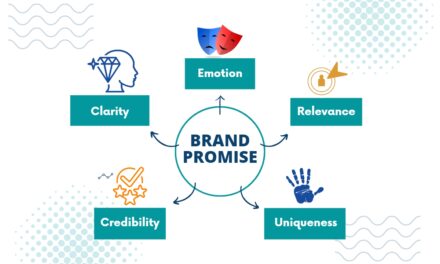Introduction
Adapting Your Brand to Different Marketing Channels: A Guide for Coaches
In the ever-evolving world of digital marketing, coaches face a unique challenge: how to adapt their brand to resonate across various marketing channels. Whether you’re a life coach, a fitness guru, or a business mentor, understanding the nuances of Brand Adaptation Strategies and Multi-Channel Branding is crucial in today’s digital landscape.
Imagine you’re at a networking event. You’re the same person whether you’re chatting with a potential client, discussing strategies with a peer, or listening to a keynote speaker. Similarly, your brand should maintain its core identity whether it’s on Instagram, in an email newsletter, or on a YouTube video. This is where Marketing Channel Branding comes into play. It’s about presenting your brand cohesively, yet appropriately, across different platforms.
For coaches, this isn’t just about logos and color schemes; it’s about conveying your unique value proposition and personal touch in every interaction. Your brand is more than a business; it’s a reflection of your coaching philosophy and the transformative journey you offer your clients. Therefore, adapting your brand to different channels isn’t just a marketing tactic; it’s a way to genuinely connect with your audience, wherever they are.
Take Marie Forleo, a life coach and motivational speaker. Her brand shines consistently, whether she’s hosting her web show “MarieTV,” posting on Instagram, or sending out her newsletter. Her message of empowerment and actionable advice remains constant, yet it’s tailored to fit the context of each platform.
As we delve deeper into this guide, we’ll explore how you can achieve Brand Consistency Across Channels, leverage Cross-Channel Branding Techniques, and tailor your brand for various Marketing Platforms. By the end of this journey, you’ll be equipped with the knowledge to not only adapt your brand to different channels but to thrive in them, reaching and inspiring more clients than ever before.
Understanding Your Brand Identity
Before diving into the intricacies of Multi-Channel Branding, it’s essential for coaches to first solidify their brand identity. Your brand identity is the essence of who you are as a coach and what you represent. It’s more than just a logo or a color palette; it’s the values, beliefs, and experiences that define your coaching style and approach.
Consider your brand identity as your professional fingerprint in the digital world. It’s what sets you apart in a crowded market. For instance, a wellness coach might emphasize holistic health and mindfulness, while a business coach might focus on strategic growth and leadership skills. This core identity should be the anchor in all your marketing efforts.
When adapting your Brand Identity in Various Channels, consistency is key. Whether you’re writing a blog post, creating a video, or updating your social media, your core message should resonate clearly. This doesn’t mean repeating the same content verbatim across platforms. Instead, it’s about tailoring your message to fit the medium while maintaining the essence of your brand.
For example, your Instagram might showcase more personal, behind-the-scenes content, while your LinkedIn profile highlights your professional expertise and achievements. Both platforms should reflect your unique coaching style and values, ensuring that no matter where your audience encounters your brand, they receive a cohesive and authentic experience.
The Essentials of Brand Consistency Across Channels
Achieving Brand Consistency Across Channels is a pivotal aspect of successful digital marketing for coaches. This consistency is what builds trust and recognition among your audience, no matter where they interact with your brand. It’s about creating a unified experience that reinforces your brand’s message, values, and personality.
Firstly, understand that consistency goes beyond visual elements like logos and color schemes. It encompasses your tone of voice, messaging, and even the type of content you share. For instance, if you’re a career coach known for your pragmatic and results-oriented approach, this should be evident in your LinkedIn articles, your tweets, and your YouTube tutorials. This consistency ensures that your audience receives the same quality and style of content, reinforcing their understanding and expectations of your brand.
However, consistency doesn’t mean uniformity. Each channel has its unique features and audience preferences. The key is to adapt your content to fit these nuances while maintaining your brand’s core message. For example, your motivational quotes might be short and visually appealing for Instagram, more detailed and narrative-driven for Facebook, and concise and professional for LinkedIn.
An excellent example of this is Simon Sinek, a leadership coach and author. His message of “Start With Why” permeates all his channels, from TED Talks to Twitter posts, yet the content is adapted to suit the medium’s context and audience.
To maintain this level of consistency, it’s helpful to have a brand guideline. This document should outline your brand’s voice, tone, key messages, and visual elements. It serves as a reference point for any content you create, ensuring that all your marketing efforts are aligned.
Incorporating Effective Branding Across Media Channels involves regular audits of your content. Periodically review your channels to ensure they align with your brand guidelines. This practice helps in identifying areas where your brand’s message may be getting diluted and allows you to make necessary adjustments.
In conclusion, brand consistency across various channels is not just about being recognizable; it’s about creating a dependable and coherent brand experience that resonates with your audience, no matter where they find you.
Multi-Channel Branding for Coaches
Multi-Channel Branding is a dynamic approach that allows coaches to engage with their audience across different platforms, each offering unique opportunities to connect and communicate. In the digital age, where your audience might interact with your brand through various touchpoints – from social media to email newsletters – mastering multi-channel branding is essential.
The first step in multi-channel branding is to identify the channels most relevant to your target audience. For coaches, this often includes platforms like LinkedIn for professional networking, Instagram for visual storytelling, a personal blog for in-depth insights, and perhaps YouTube for video content. The goal is to be where your potential clients are, offering them value in the format they prefer.
Once you’ve identified your channels, the next step is to develop a Brand Strategy for Multiple Channels. This strategy should consider the strengths and audience of each platform. For instance, LinkedIn is ideal for sharing professional achievements and thought leadership articles, while Instagram can be more personal, showcasing your day-to-day life as a coach and behind-the-scenes glimpses.
An essential aspect of multi-channel branding is understanding that different channels cater to different aspects of your brand story. A fitness coach, for example, might use Instagram to post workout routines and motivational quotes, a blog to write detailed articles on nutrition and wellness, and YouTube for longer-form content like fitness challenges or instructional videos. Each channel contributes to a holistic brand image.
However, it’s crucial to maintain a level of Brand Consistency Across Channels. Your core values, brand voice, and overall messaging should be identifiable across all platforms. This consistency helps in building brand recognition and trust. For example, if your coaching style is empowering and energetic, this should be evident whether someone reads your tweet, watches your webinar, or reads your email newsletter.
Lastly, remember that Adapting Brand Message for Channels doesn’t mean losing your brand’s essence. It’s about presenting your core message in different formats and styles suited to each channel. By doing so, you ensure that your brand remains versatile and engaging across the diverse landscape of digital marketing.
Cross-Channel Branding Techniques
Cross-channel branding is an advanced facet of digital marketing, especially crucial for coaches who wish to establish a strong presence across multiple platforms. Cross-Channel Branding Techniques involve not just being present on various channels but creating a cohesive narrative that threads through each one, enhancing your brand’s story and reach.
One effective technique is to create interconnected content that encourages your audience to follow your brand from one channel to another. For instance, a life coach could start a topic on a LinkedIn post, offer deeper insights in a blog article, and then host a Q&A session on Instagram Live. This approach not only increases engagement across platforms but also provides a comprehensive experience of your brand.
Another key technique is leveraging the unique features of each platform while maintaining a consistent brand voice and aesthetic. For example, while your Twitter might be used for quick, inspirational quotes or industry news, your YouTube channel can host in-depth discussions or tutorials. Despite the content differences, your brand’s core message and visual elements should be recognizable across these channels.
Utilizing analytics tools is also vital in cross-channel branding. These tools can provide insights into which types of content perform best on which platforms, allowing you to tailor your approach effectively. For example, if your Instagram stories are getting more engagement than your posts, you might consider putting more effort into story-based content that resonates with your audience.
Storytelling is a powerful element in cross-channel branding. As a coach, sharing client success stories, your personal journey, or day-to-day experiences can create an emotional connection with your audience. The key is to adapt these stories to suit the format of each platform while ensuring they contribute to a unified narrative about your brand.
Finally, consistency in timing and frequency of posts across channels is crucial. Regular posting schedules help in keeping your audience engaged and make your brand a reliable source of information and inspiration.
In summary, cross-channel branding for coaches is about strategically using each platform’s strengths, creating interlinked content narratives, and maintaining a consistent brand presence. By mastering these techniques, you can build a robust digital footprint that resonates with your audience across all channels.
Adapting Brand Message for Channels
In the realm of digital marketing, Adapting Brand Message for Channels is a critical skill for coaches. Each marketing channel has its unique audience and style of communication, and your brand message should be tailored to fit these nuances while maintaining its core essence.
For instance, consider a career coach. On LinkedIn, their message might focus on professional growth, networking strategies, and industry insights, appealing to a career-oriented audience. The same coach on Instagram, however, might share more personal stories of client successes, daily motivational quotes, and short video tips, catering to a broader, more diverse audience seeking inspiration and guidance.
This adaptation involves more than just changing the content; it’s about modifying the tone, style, and even the format to suit the platform. A detailed, informative blog post can be transformed into an engaging infographic for Pinterest or a concise, impactful tweet. The key is to distill the essence of your message into various forms without losing its original value and intent.
By effectively adapting your brand message for different channels, you not only increase the relevance of your content for each audience but also amplify your brand’s reach. This approach ensures that whether a potential client is scrolling through Twitter, LinkedIn, or watching a YouTube video, they encounter a facet of your brand that resonates with them.
Branding for Different Marketing Platforms
When it comes to Branding for Different Marketing Platforms, it’s crucial for coaches to understand the unique dynamics of each platform to maximize their brand’s impact. Each platform serves a specific purpose and caters to a distinct audience demographic, requiring a tailored approach to branding.
For instance, LinkedIn is a professional network where coaches can share industry insights, articles, and participate in professional discussions. The branding here should be polished and professional, focusing on showcasing expertise and building credibility in your coaching niche.
Instagram, on the other hand, is a visually-driven platform ideal for building a more personal connection with your audience. Here, coaches can share inspiring images, short video clips, and stories that offer a glimpse into their coaching style and personal life, making their brand more relatable and approachable.
Facebook offers a blend of these elements, allowing for longer posts, sharing of resources, and the creation of community groups. Coaches can use this platform to foster a sense of community among followers, share success stories, and engage in more in-depth conversations.
Lastly, platforms like YouTube are perfect for sharing longer-form content such as tutorials, webinars, or motivational talks. This platform allows coaches to delve deeper into topics, providing valuable content that can enhance their authority and expertise in their field.
In summary, successful branding across different marketing platforms involves understanding the unique strengths and audience of each platform and tailoring your brand’s presence accordingly. By doing so, coaches can effectively communicate their message and connect with their audience in a meaningful way.
Effective Branding Across Media Channels
Effective branding across various media channels is pivotal for coaches to establish a strong, recognizable presence in the digital world. This involves not just being present on multiple platforms but also ensuring that your brand communicates a consistent, cohesive message everywhere.
The first step is to understand the different types of media channels available and their respective strengths. Social media platforms like Facebook and Instagram are excellent for building personal connections and engaging directly with your audience through comments and messages. On the other hand, a blog or a podcast can provide in-depth, valuable content that establishes your expertise and thought leadership in your coaching field.
Visual consistency is also crucial. Ensure that your brand’s visual elements – like logos, color schemes, and typography – are uniform across all channels. This visual consistency helps in creating instant brand recognition. For instance, if your brand color is teal, your Instagram posts, YouTube thumbnails, and website should feature this color prominently.
Moreover, the tone and style of your messaging should be adapted but consistent. A health coach might use motivational and uplifting language, which should resonate through their tweets, video scripts, and blog posts, albeit in different formats suited to each platform.
In essence, effective branding across media channels requires a strategic blend of consistency in your brand’s core message and visual identity, along with the flexibility to adapt to the unique format and audience of each channel.
Brand Positioning in Different Channels
Brand positioning in different channels is a strategic approach to ensure your coaching brand stands out and resonates with the right audience on each platform. It’s about aligning your brand’s core values and strengths with the specific characteristics and user expectations of each channel.
On professional networks like LinkedIn, positioning your brand might involve highlighting your credentials, sharing client testimonials, and publishing insightful articles that showcase your expertise in coaching. This platform is ideal for establishing authority and building professional relationships.
In contrast, on more casual platforms like Instagram or Facebook, the focus shifts to creating a more personal and approachable brand image. Here, sharing behind-the-scenes glimpses of your coaching sessions, client success stories, and interactive content like polls or live Q&A sessions can position your brand as relatable and engaging.
For video platforms like YouTube, brand positioning involves delivering valuable content in an engaging format. Whether it’s through tutorial videos, motivational talks, or interactive coaching sessions, the goal is to position your brand as a go-to source for insightful and helpful coaching content.
Each channel offers a unique opportunity to position your brand in a way that appeals to its specific audience. By carefully crafting your brand’s presence on each platform, you can ensure that your coaching brand not only reaches a wider audience but also makes a meaningful impact.
Brand Adaptation in Social Media
Adapting your coaching brand for social media is a nuanced process that involves more than just posting regularly. It’s about understanding the unique culture and audience of each platform and tailoring your brand’s message to resonate in these diverse social spaces.
On platforms like Instagram, which are highly visual, your brand’s adaptation could involve creating inspirational quote graphics, short video clips of coaching sessions, or even carousel posts that offer bite-sized coaching tips. The key here is to leverage Instagram’s visual storytelling capability to create a strong emotional and visual appeal.
Twitter, with its character limit and fast-paced nature, is ideal for concise, impactful messages. As a coach, you could use Twitter to share quick tips, engage in trending conversations relevant to your niche, and connect with a broader community. It’s about being succinct yet memorable in your messaging.
Facebook offers a more versatile space, suitable for longer posts, creating event pages for webinars or workshops, and even forming groups to foster a community around your coaching brand. Here, the adaptation involves creating more detailed and interactive content that encourages engagement and discussion.
In essence, brand adaptation in social media is about being flexible and creative in how you present your brand, ensuring that it not only fits the platform’s style but also engages and resonates with its specific audience.
Omnichannel Branding Strategies
Omnichannel branding is the pinnacle of digital marketing, especially for coaches looking to establish a robust and cohesive online presence. Omnichannel Branding Strategies involve creating a seamless and consistent brand experience across all channels and platforms, ensuring that clients receive the same quality and feel of your brand, whether they’re browsing your website, reading your tweets, or watching your videos on YouTube.
The cornerstone of a successful omnichannel strategy is a deep understanding of your audience. It’s crucial to know where your potential clients spend their time and how they prefer to consume content. For instance, if your target audience includes busy professionals, they might prefer downloadable podcasts or short LinkedIn posts that they can consume on the go.
Once you understand your audience’s preferences, the next step is to ensure consistency in your brand’s messaging and visual identity across all channels. This doesn’t mean posting the same content everywhere. Rather, it’s about adapting your core message to fit the context and format of each platform while maintaining a unified brand voice and aesthetic. For example, your motivational coaching advice could be a blog post, part of an email newsletter, and a condensed quote for Twitter.
Another key aspect of omnichannel branding is integrating your various channels so they work together to provide a cohesive brand experience. This could mean using social media to drive traffic to your blog or website, or using your YouTube channel to promote upcoming webinars or coaching sessions.
Engagement is also a crucial element of omnichannel branding. Engaging with your audience through comments, messages, and interactive content across platforms helps in building a strong, loyal community around your brand. It shows that you’re not just broadcasting information but are also interested in listening and responding to your audience.
In conclusion, omnichannel branding for coaches is about creating a consistent, integrated, and engaging brand presence across all digital touchpoints. By implementing these strategies, you can ensure that your brand not only reaches a wider audience but also provides a valuable and consistent experience, no matter where or how your clients interact with you.
Conclusion
In conclusion, adapting your brand to different marketing channels is a vital step for coaches venturing into the digital world. By understanding and implementing strategies like brand consistency, multi-channel and cross-channel branding, and omnichannel approaches, you can create a powerful and recognizable brand presence. Remember, each platform offers a unique opportunity to connect with your audience; it’s about tailoring your message to resonate across these diverse mediums while maintaining the core essence of your brand. Embrace these strategies, and watch as your coaching brand flourishes, reaching and inspiring a broader audience in the digital landscape.











